mytest
Hi Blog. I heard from Tyler Lynch that Japan Tourism Agency Commissioner Mr Honpo gave a speech in Nagano recently, on how to more than double tourism to Japan to 20 million visitors per annum by 2020 (see article immediately following). One question during the Q&A was the recent poll indicating that 27% of hotels polled don’t want NJ tourists, for whatever reason (something not mentioned in the article below). What was the GOJ going to do about these coy lodgings, refusing people in violation of Japanese hotel laws? Well, according to Tyler, nothing. First the article, then Tyler’s report:
===============================
In tough economic times, tourism boss finds visitor boost a tall order
The Japan Times, Tuesday, Nov. 11, 2008
Japan’s ailing regional economies can be revitalized by tapping the sightseeing potential of growing Asian countries, according to Japan Tourism Agency Commissioner Yoshiaki Hompo.
 |
| Tall order: Japan Tourism Agency Commissioner Yoshiaki Hompo is interviewed recently in Tokyo. YOSHIAKI MIURA PHOTO |
China will be a vital market, and Hompo’s agency is now in talks with other government bodies to gradually ease rules for issuing visas to Chinese tourists, he said during a recent interview in Tokyo.
Hompo also said the Japanese are not exclusionist and boasted the country has a unique natural and cultural diversity.
The agency was launched last month as part of efforts to draw 20 million foreign tourists by 2020, far beyond the 8.4 million who visited last year.
“Because the nation’s population is declining, Japan as a whole is increasingly aware that it must vitalize its regions by expanding exchanges, and some municipalities are desperate,” the new agency chief said.
Hompo hopes that despite the yen’s recent appreciation, Chinese, South Koreans, Taiwanese and Singaporeans will boost travel to Japan in the future.
Those parts of Asia with high growth potential must be included in Japan’s economic growth strategy, he said. Sightseeing can be a crucial and effective way to serve these goals, he stressed.
Hompo said he is proud of Japan’s unique tourism resources.
“Japan has been taking in both Western and Oriental cultures in its own way, so we now have an extremely diverse culture,” Hompo boasted.
“We have diversity that even Europe and Asia do not possess. It is a distinguishable feature of Japanese tourism resources,” Hompo said.
To draw 20 million tourists, the agency said Japan will need to attract around 6 million from China, which is far more than the 900,000 who visited last year.
“We will not be able to achieve that if we do not ease visa” restrictions for travelers from China, Hompo said, adding, however, the government will ease them gradually.
Experts are recommending streamlining the visa process or offering exemptions in certain cases to attract more visitors.
While boasting attractive tourism resources, and ambitious goals, the surging yen and recent world economic turmoil have cast a dark shadow on the market, Hompo conceded.
In September, the number of foreign tourists to Japan fell almost 7 percent from a year earlier to 611,500. South Korean travelers plunged more than 20 percent to 159,500.
“We have to be ready for this situation possibly continuing,” Hompo said.
But he remains optimistic as he said many foreign tourists have been choosing Japan in recent years.
Hompo said the agency will accelerate coordination with other ministries on easing visa restrictions for Chinese tourists.
“Easing visa (restrictions) has apparently quick effects” in bringing in more foreign tourists, he said.
While some may argue that many Japanese are xenophobic, Hompo said Japan will welcome foreign tourists with hearty hospitality.
“I do not necessarily think (Japanese) are exclusive in general,” Hompo said. “I wonder if anywhere else has people with this abundant hospitable mentality.”
The agency is in charge of implementing measures to turn Japan into a more tourism-oriented nation. It promotes the Visit Japan campaign, which publicizes appeals overseas for people to visit Japan and take in its natural scenery, modern metropolises and traditional enclaves.
ENDS
============================
COMMENT: Here’s how Tyler reported (from a comment on Debito.org) about a speech Mr Honpo gave:
Tyler (平) Lynch Says:
October 30th, 2008 at 4:57 pm
Debito-san,
Yesterday I attended a tourism symposium in Matsumoto (Nagano Pref.) Yoshiaki Hompo, the 長官 of the newly created Japan Tourism Agency, was the guest speaker, and he commented on this issue of 27% of ryokans not wanted foreign guests.
Hompo-san presented some impressive stats on Japan’s tourism and (declining) population trends. One important figure was how much tourist expenditure it would take to cover the economic loss of one resident: 24 Japanese tourists (76 if just day trippers) or just 5 tourists from overseas. The point is Japan’s economy needs “Inbound” tourists to keep the economy stable during its population loss. In 2003, ex-PM Koizumi declared the goal of 10 million foreign tourists per year by 2010. Seemed pretty ambitious with there only being 5,100,000 at the time, but ‘08 is on target for 9,150,000. (That target is now in danger due to the recent climb of the Japenese Yen.) As Koizumi’s goal will likely be achieved earlier than expected, the JTA is now considering a new goal of 20 million by 2010. That would mean 1 in every 6 宿泊者 (lodgers) would be a foreigner (compared with 1 in 14 in 2007).
Hompo-san then said he is often asked: “With that type of stat, are you just going to ignore the 27% of the ryokans that don’t want to accept foreigners?” You know what his reply was? “Yes, we are going to ignore them.” The reasoning was that the 1 in 6 won’t be spread evenly across all inns and hotels. The percentages will obviously be higher in Tokyo than the countryside. The inns in the 27% group tend to be in the countryside and tend to not want foreigner guests because they are not confident they can provide satisfactory service to them (c.f. Iegumo-san’s in-laws). Hompo-san indicated he would prefer to let such inns persist in their ignorance rather than forcing Inbounders on them, which would only create unpleasant experiences for both parties. As Japan’s population (and therefore their customer base) shrinks, then maybe the inns will wake up to the reality of needing to direct their omotenashi towards foreigners. Or maybe they’ll just keep on sleeping… (My editorializing, not his, but Hompo-san did say he would ほっとく the 27% in the hopes of avoiding them providing 忠太半端 service to foreign guests.)
=========================
DEBITO COMMENTS: So there you have it. The economic incentives are clear: 5 NJ tourists equals 24 J tourists (or 76 J day trippers) — meaning NJ tourists spend five to fifteen times more money than Japanese tourists. But Mr Honpo doesn’t seem to think that enforcing the Ryokan Gyouhou matters — the invisible hand of economic pressure will take care of everything, including discrimination against foreigners.
Maybe. But it’s still odd for a member of the administrative branch to argue that laws need not be enforced — that exclusionary hotels can just be ignored. As if “JAPANESE ONLY” rules at hotels will not encourage copycats in other business sectors to put up similar signs and rules. Moreover, economic incentives have not resolved other cases of exclusion, even when there are similar buyers’ markets in the apartment rental economy, where refusals of NJ are still commonplace. Harrumph.
Arudou Debito in Sapporo, another major tourist destination.
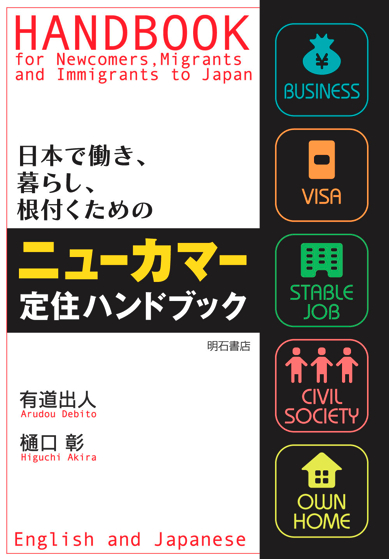
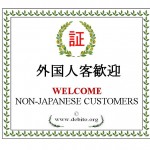
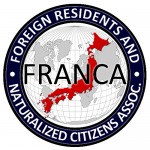
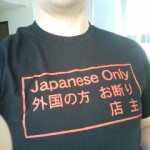

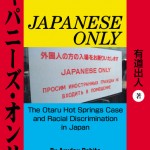
10 comments on “Japan Times on GOJ’s new efforts to boost tourism to 20 million per annum”
> meaning NJ tourists spend five to fifteen times more money than Japanese tourists
Not necessarily. They may spend about the same amounts, but NJ tourists bring their money from overseas, while J tourists spend money earned in Japan. So 1000 bucks spent by NJ tourist is 1000 bucks influx into Japanese economy, while 1000 bucks spent by J tourist is none.
— Well, not exactly. J tourists also infuse money into the J economy (as opposed to leaving it lying dormant in their bank account). What you mean I think is the infusion of foreign exchange from NJ tourists, which is indeed a good thing with knock-on economic benefits.
Tourism to Ameica has dropped by six million people per year since the introduction of fingerprinting at the border, and airlines like Virgin are resigned to the fact that the numbers will fall even more now that visitors are required to sign up online at least two days before they travel.
You either have fingerprinting, or you have a tourist industry. You cannot have both. This is not rocket science, but is apparently beyond the comprehension of racist politicians who think that Japan is just so wonderful, no one can resist its allure. They somehow think that western tourists would rather visit Japan than America. They are deluded, and it is the Japanese economy that will suffer in the long run.
“You either have fingerprinting, or you have a tourist industry. You cannot have both. This is not rocket science, but is apparently beyond the comprehension of racist politicians who think that Japan is just so wonderful, no one can resist its allure.”
Maybe Japan is counting on the weak yen to pull in the foreign tourists! 🙂
“Tourism to Ameica has dropped by six million people per year since the introduction of fingerprinting at the border”
US-VISIT program was implemented in 2004(or 2003?).
In any case, according to the World Tourism Organization statistics, there were 41.2 million arrivals in 2003 into U.S. The number increased to 46.1 million in 2004.
http://unwto.org/facts/eng/pdf/indicators/ITA_top25.pdf
In 2005 and 2006, the number increases to 49.2 million and 51.1 million, respectively.
http://unwto.org/facts/eng/pdf/highlights/highlights_07_eng_hr.pdf
Conclusion: Fingerprinting, strip search, anal probing, and so-called “human rights violations” or whatever at the border has very little impact on the tourism numbers.
I always thought that Western tourists aren’t exactly coming to Japan for the “Japanese culture” Ishihara and his ilk are so proud of.(these days, many are more into the modern culture than the traditional I suspect, and have little idea of what most Nihonjinron-ers hold up as examples of Japan’s uniqueness…the whole “Japan has 4 seasons!” and various local festivals nobody outside Japan has ever heard of, type of stuff) Yes, Japan is a great place, but it has nothing to do with right-wing nationalists’ feelings, and they certainly don’t deserve to lay claim to Japan’s good points as if they were its guardians.
Meanwhile, I think Japanese culture is not at all the goal for most of the Asian tourists (the vast majority, right?) They come here to go shopping either for tech, fashion, or food, and don’t give a crap about Japanese traditions and are (in a way) making efforts to put Japanese-ness out of their minds (due to early 20th century history, continued gaffes by Japan and propaganda of their own governments) and see Japan as a high-end shopping mall (Tokyo) with a really good Food Court (Osaka) and a museum or two (Kyoto, Nara) to round out the weekend, though lots still choose TokyoDisney or USJ instead.
If anyone has data to back up the ideas above, please let me know. I’m likely totally wrong.
who wants to receive a “fingerprinting” welcome? Must be easy to decide to go somewhere far more welcoming and indeed far cheaper.
Incidentally, it’s almost time for the J government to “celebrate” their first year fingerprinting anniversary. I wonder how many of these foreign criminal devils they’ve managed to ensnare?
20 Million tourists. Sounds a bit ambitious, especially with the strong yen.
20 Million is doable – how many more Chinese, right on Japan’s doorstep, are going to move into the middle class in the next 10 years? Lots. They are also used to things like fingerprinting.
@Level3
I’m curious too about where the foreign tourists visit. I stayed in a very foreigner friendly business hotel in Shibuya last year and it was packed with foreigners who definitely there for the Tokyo scene but on the other hand I stayed at a somewhat upscale ryokan in Kurashiki, Okayama that claimed to have a very high rate of foreign guests (the seasonal menu was translated). I live in Hiroshima and feel that it might even beat Kyoto for foreign tourists even though the tourism infrastructure is still lacking. While they have done pretty good with the signs, the tourism information office at the main station is hidden away in the basement.
Anyhow, there may be a certain level of interest in the Japanese tourist sights, if Japan wants to attract more foreigners they should exploit ecotourism more. What is that town in Sapporo that the Ozzies have virtually taken over?
— Niseko. It’s 100 kms southwest of Sapporo.
The US is much more Tourist friendly than Japan and that is why they receive more visitors. If there were inns, restaurants, bars etc. that said “No Foreigners” the crap would hit the fan not only by officials but also the public. The public has the inability to speak up in Japan and that is why these problems won`t change. Even when outright obvious racism is alive and well heads are turned away…